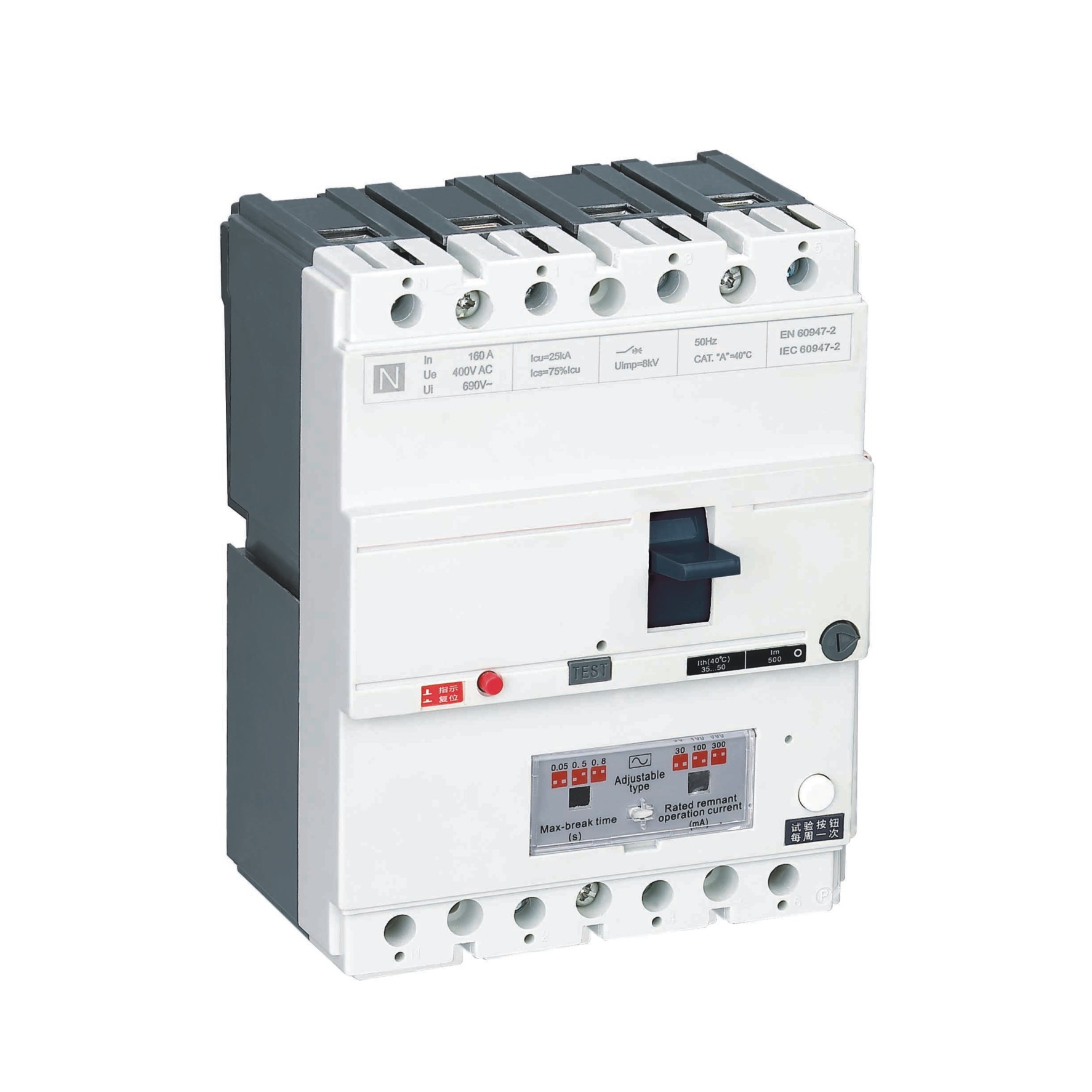Electrical safety is a critical concern in homes, offices, factories, and construction sites. One of the most effective tools for protecting people and equipment from electrical hazards is the Earth Leakage Circuit Breaker (ELCB).
An ELCB continuously monitors the flow of current in an electrical circuit and instantly cuts off power when it detects dangerous leakage currents. This simple yet powerful function helps prevent electric shocks and fires caused by faulty wiring or damaged insulation.
In this article, we’ll explore what an ELCB is, how it works, its different types, and where it should be installed to ensure maximum safety.

An Earth Leakage Circuit Breaker (ELCB) is a safety device designed to detect abnormal leakage currents in an electrical system and automatically disconnect the power supply.
Also known as:
Residual Current Device (RCD)
Sometimes confused with RCBO (Residual Current Breaker with Overcurrent)
Its primary purpose is to:
Protect human life from electric shock
Prevent electrical fires due to leakage currents
ELCBs are commonly used in residential, commercial, and industrial settings where electrical safety is crucial.
There are two main types of ELCBs, each with distinct working principles and applications:
Working Principle: Detects voltage differences between the equipment body and earth.
Use Case: Suitable for older installations and systems with stable grounding.
Advantages:
Lower cost
Less sensitive to small leaks, reducing false trips
Disadvantages:
Cannot detect direct contact with live wires
Requires a separate earth connection
May miss low-level leakage currents
Working Principle: Monitors current imbalance using a zero-sequence current transformer (also called a Core Balance Current Transformer – CBCT).
Use Case: Widely used in modern electrical systems.
Advantages:
High sensitivity (can detect as low as 5–30mA)
No need for an extra earth connection
Fast response time
Disadvantages:
More expensive than VO-ELCB
May trip unnecessarily due to old appliances
Does not provide overload or short-circuit protection
The core idea behind an ELCB is to monitor the balance between the incoming and outgoing current in a circuit.
The current flowing through the live (phase) and neutral conductors is equal.
There is no leakage current — the system is balanced.
If there’s a fault (e.g., damaged insulation or a person touching a live wire), some current escapes to the ground — creating a leakage current.
This causes an imbalance in the current flow.
The ELCB uses a zero-sequence current transformer to detect this imbalance.
When the difference exceeds a preset threshold (typically 30mA for personal protection), the ELCB trips, cutting off the power within milliseconds.
This rapid disconnection significantly reduces the risk of serious injury or fire.

An ELCB contains several essential components that work together to detect and respond to faults:
Zero Sequence Current Transformer (CBCT):Detects current imbalance between phase and neutral.
Electronic Control Unit:Processes the signal from the CBCT and determines if a trip is necessary.
Trip Mechanism:Physically disconnects the circuit when a fault is detected.
Test Button:Allows users to manually test the ELCB to ensure it's functioning properly.
ELCBs play a vital role in maintaining electrical safety. Here’s why they are so important:
Prevents Electric Shocks: Even a small leakage current (as low as 10–30mA) can be dangerous. ELCBs act fast to protect users.
Reduces Fire Risk: Electrical faults and leakages can generate heat, leading to fires. ELCBs cut off the power before this happens.
Automatic Protection: Unlike manual switches, ELCBs respond instantly without human intervention.
Mandatory in Many Regions: Many national and local electrical codes require ELCBs in high-risk areas like bathrooms, kitchens, and outdoor circuits.
ELCBs are especially useful in environments where the risk of electrical leakage is higher. Some common applications include:
Bathrooms and Kitchens: Where water and electricity coexist.
Outdoor Sockets and Garden Lighting: Exposed to weather and moisture.
Construction Sites: Temporary wiring systems are more prone to damage.
Medical Facilities: To protect patients and sensitive equipment.
EV Charging Stations: To ensure safe operation of high-voltage charging systems.
| Feature | ELCB | RCD | RCBO |
|---|---|---|---|
| Full Form | Earth Leakage Circuit Breaker | Residual Current Device | Residual Current Breaker with Overcurrent |
| Function | Detects earth leakage only | Same as ELCB (often used interchangeably) | Combines leakage + overcurrent/short-circuit protection |
| Overload Protection | No | No | Yes |
| Short-Circuit Protection | No | No | Yes |
| Use Case | Older systems | Modern systems | Ideal for standalone branch circuits |
While ELCB and RCD refer to similar devices, RCBO offers broader protection and is often preferred in new installations.
Selecting the right ELCB depends on your specific needs and installation environment. Consider the following factors:
Rated Current (In): Match it to the load requirements of the circuit.
Leakage Current Setting (IΔn):
30mA – For personal protection (bathrooms, kitchens)
100–300mA – For fire protection and heavy-duty use
Number of Poles:
2-pole for single-phase systems
4-pole for three-phase systems
Type of ELCB:
Type AC – For general household use
Type A/B/C – For specialized loads (e.g., variable frequency drives, EV chargers)
Need for Overcurrent Protection:
Choose RCBO if you also need MCB functionality
To ensure your ELCB functions correctly and lasts longer, follow these best practices:
Proper Installation: Always install according to manufacturer instructions and local electrical codes.
Check Wiring Polarity: Ensure correct phase and neutral connections.
Test Monthly: Press the “Test” button regularly to verify proper operation.
Monitor Tripping Patterns: Frequent tripping may indicate wiring issues or appliance faults.
Clean and Dry Environment: Install in dry, dust-free locations to avoid performance issues.
An Earth Leakage Circuit Breaker (ELCB) is a fundamental component in any electrical safety system. Whether in your home, office, or industrial facility, it provides essential protection against electric shocks and fire hazards caused by leakage currents.
Understanding the types, working principles, and applications of ELCBs helps you make informed decisions when selecting and installing them. While newer alternatives like RCBO offer additional features, ELCBs remain a reliable and cost-effective solution for many scenarios.
Always prioritize electrical safety — because even a small leakage can have big consequences.